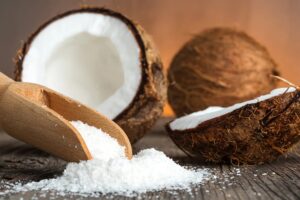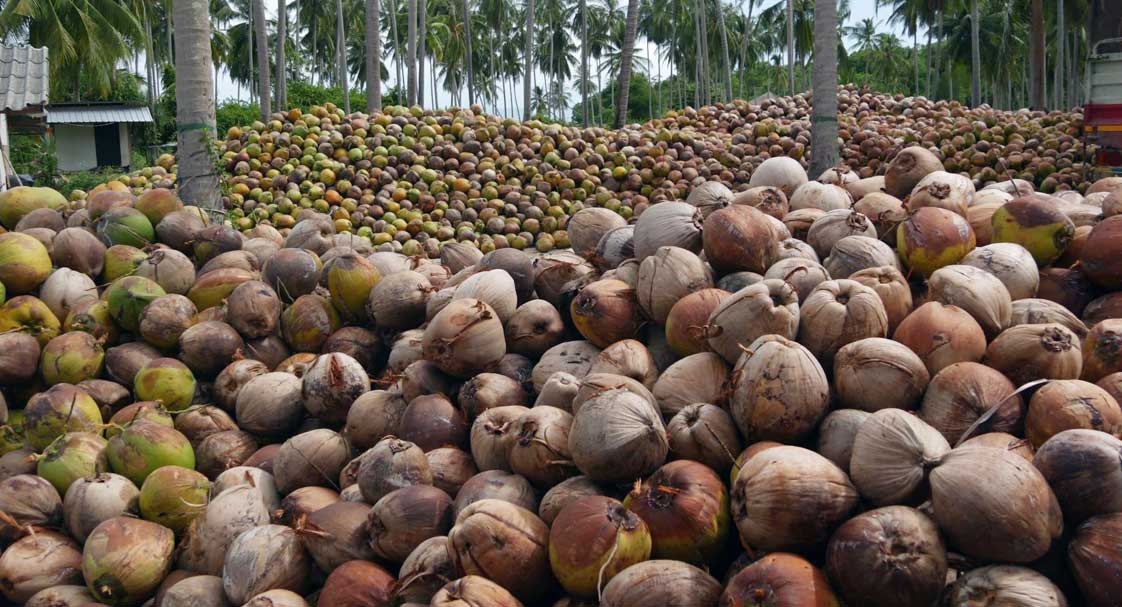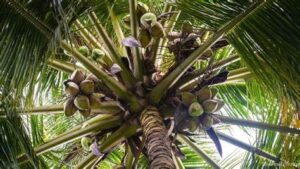I’m a coconut,
A nutty nut,
I grow upon a coconut tree,
I’m a nut that’s brown,
I’m hard to get down,
I’m delicious as you can see -.Spike Milligan
Sri Lanka, renowned for its lush coconut groves and significant contribution to the global coconut industry, has been experiencing a notable trend in coconut production and prices in recent months.
Recent Price Hike
Sri Lanka’s average coconut prices rose by 2.3 percent from 82,616 rupees to 84,592 rupees per 1,000 nuts at an auction on July 18, according to data from the Coconut Development Authority. This price level has not been seen since March 2023, indicating a significant upward trend in the market.

Highest Price: 90,200 rupees, down from 95,600 rupees per 1,000 nuts.
Lowest Price: 76,700 rupees, up from 74,100 rupees per 1,000 nuts.
A total of 399,773 coconuts were offered at the auction, with 352,055 being sold. Wholesale prices on July 11 ranged from 95 to 105 rupees for large nuts and 85 to 90 rupees for small nuts. Farmgate prices in Kurunegala were between 77,000 and 82,000 rupees per 1,000 nuts. Additionally, coconut oil prices ranged from 700,000 to 725,000 rupees per metric ton, and coconut shells were priced between 32,000 and 33,000 rupees per metric ton.
Reasons for the Price Hike
The global demand for coconut-based products like coconut oil, desiccated coconut, and coconut water has been rising. Supply chain disruptions , have also contributed to the rising prices. Irregular rainfall patterns and extreme weather conditions due to climate change have affected coconut yields and driven up prices.Pests and diseases such as the coconut leaf beetle and lethal yellowing disease have become increasingly costly. These added expenses are often passed on to consumers in the form of higher prices.
Positive Influence :
Although Urbanization and the conversion of coconut lands for other agricultural or commercial purposes have reduced the total area available for coconut cultivation the yield seems to have increased . there has been a steady rise in coconut production due to improved agricultural practices and high-yielding varieties. Enhanced irrigation techniques and better pest management have contributed to higher yields per hectare, ensuring a more robust production cycle.
Government Initiatives:
The Sri Lankan government has been actively supporting the coconut industry through various initiatives. Programs aimed at replanting and rejuvenating old coconut plantations have been implemented to sustain production levels. These efforts include subsidies for new plantings, training for farmers, and investments in research and development.
Research and Development:
Ongoing research and development efforts are focused on improving coconut varieties to be more resistant to pests, diseases, and climate variations. Biotechnology and genetic engineering are being explored to enhance the quality and yield of coconuts, ensuring that the industry can adapt to future challenges.
Value-Added Products:
There has been a shift towards producing value-added coconut products such as virgin coconut oil, coconut milk, and coconut flour. These products cater to the health-conscious consumer market and add economic value to the raw coconut produce, offering new revenue streams for producers.
Positive Projections:
The outlook for Sri Lanka’s coconut production remains positive, with expected increases in both domestic consumption and export demand. Continued government support and advancements in agricultural technology are likely to further boost production, ensuring the industry’s growth and sustainability.
Baila King M S Fernando Sings Coconuts








